Desert Hiking Tips
If you’re planning to hike the Pacific Crest Trail, Continental Divide Trail or one of the other trails that goes through the desert, here are some tips to help you stay cool and hydrated…
Tip #1: Don’t hike during the middle of the day

PCT Hiker "Sage" on the California Aqueduct, Mojave Desert
Most of the animals that live in the desert are nocturnal. They spend their days relaxing in shady places waiting for the sun to go down. They come out at night to hunt and do most of their activity. My philosophy is “When in the desert, do as the desert creatures do”.
Wake up early in the morning before the sun rises and hike until noon (or when it starts to get really hot). Then find a nice shady spot (hopefully with water nearby) to rest and spend the afternoon. When evening comes and it starts to cool off pack up and hike another 4-6 hours through the evening and into the night.
If you’ve never hiked at night before you might be a bit nervous about it. But night hiking in the desert can be very enjoyable. When the sun goes down the desert is transformed into an enchanting world bustling with life that you miss during the day.
As you hike you’ll be serenaded by coyotes and crickets and the smell of fresh sagebrush fills the air. If you are lucky enough to have a full moon to guide you the experience is even better, but if not an LED headlamp will provide enough light to see where you are going (as long as you are following developed trails and not hiking cross country)
Night hiking does come with some challenges due to not being able to see as clearly. You have to pay attention to landmarks more closely to make sure that you don’t pass up an important water source or veer off onto the wrong trail or road. It’s best not to listen to music while hiking in the desert (at least not with both earphones on) because the rattlesnakes are out during the day and night, and if you can’t hear their rattle you might step on a snake.
Tip #2: Stop where the water is and “camel up”
Water is scarce in the desert, so you will need to drink and pack more water than you would in cooler climates. In the desert I typically drink 1 liter for every 3-5 miles of trail, which adds up to several gallons per day. Water is very heavy (2 pounds per liter) so the idea is to drink as much as possible and carry as little as possible. Here’s my technique for doing that:
I like to think of the water sources as rest stops and fill-up stations. Sometimes they are very far apart (upward of 20 miles). Try to travel between them swiftly and efficiently during the coolest hours of the day and take breaks or make camp when you get there. I don’t like “dry camping” (camping where there is no water source) in the desert because when you stop hiking you still have to drink water to stay hydrated, but you aren’t getting any closer to the next water. This is like pulling over to the side of the road in your car and leaving the engine running while you sleep. Your miles per gallon drops to zero.
It’s a mistake to try and conserve water during breaks or at night just because you’re not hiking. No matter how much water you drink in the desert you are always going to be toeing the line between hydration and dehydration, so it’s important to continue drinking water all day and night, even when you are not active (and even when you don’t feel thirsty).
Because of the sporadic location of water sources in the desert it’s not always possible to coordinate your breaks and campsites with where the water is. Sometimes you will need get water and hike on. In these cases what I like to do is “camel up” at the water source, which basically just means drinking as much as possible while you are there. I like to chug one liter of water when I arrive, rest as long as I can, then chug one more liter before I go. That’s half a gallon (4 pounds of water) that my body can use for the next stretch of trail that is not added to my pack weight.
It’s more efficient to carry water in your stomach and in your bloodstream than it is to carry it on your back. The water is closer to your center of gravity and it’s readily available whenever your body needs it. By cameling up at every water source you can reduce your water weight significantly. I still carry water between sources, but it’s less than I would have to if I didn’t camel up.
Using this technique (combined with avoiding the hottest part of the day) I’ve been able to cover 30+ mile waterless stretches carrying only 4-6 liters of water without risking dehydration. I recommend erring on the side of caution at first and carrying more water than you think you will need (because it is so important to staying alive). But as you become more experienced you can develop a strategy like this one to reduce your water weight.
Tip #3: Wear lightweight, breathable clothing
There are two schools of thought when it comes to desert clothing. One of them involves covering your entire body with lightweight, light colored, breathable clothing to provide protection against the sun’s UV rays. The other involves wearing as little as possible to maximize natural skin cooling from perspiration and evaporation, while relying on a suntan and portable shade (like an umbrella) for protection from direct sunlight.
Which method works best for you will most likely depend on your complexion and how much direct sunlight you can tolerate.
Method #1: Cover Up
A hiker using this method might wear:
- Wide brimmed sun hat (with neck drape or bandana to protect back of neck)
- Dark tinted sunglasses
- Long sleeve button up shirt (lightweight nylon or other synthetic fabric, light colored, often with breathable panels in the back, armpits to help with ventiliation)
- Long pants (lightweight nylon cargo paints, sometimes with zip-off legs that can be converted to shorts)
- Lightweight, breathable running socks
- Lightweight, breathable trail running shoes or cross trainers
- Sunscreen for exposed areas of skin
Method #2: Take It Off
A hiker using this method might wear:
- Reflective hiking umbrella (to provide portable shade)
- Wide brimmed sun hat (for when the umbrella is not practical to use, such as in high wind or where the trail has lots of branches for it to catch on)
- Dark tinted sunglasses
- Lightweight running shorts (typically nylon)
- No shirt (for men), Sports bra or tank top (for women)*
- Lightweight, breathable running socks
- Lightweight, breathable trail running shoes or cross trainers
- Small amount of sunscreen (only used initially until the tan comes in)
* Still carry a shirt and spare clothing for cooler parts of the day. The temperature drops a lot at night in the desert. See this article for my complete backpacking clothing system.
I have tried both methods and personally, I prefer the second method. I’m dark skinned and I’m used to lots of sun, so I have found that wearing as little clothing as possible in the heat keeps me cooler. When I wear clothing in hot weather it creates a pocket of hot air next to my skin which drains my energy and causes me to overheat and become exhausted very quickly.
Some hikers don’t have the same problem and prefer full-length clothing even in very hot weather. Experiment and see which one works best for you. My dad used to hike in jeans and combat boots even when it was 100+ degrees out and he never complained (course he was old school, so I don’t recommend that ;))
A word about shoes and socks. In the desert there are two things you have to worry about: Your feet sweating and your feet becoming dirty. Both of them can lead to painful blisters. Unfortunately there is no one choice of footwear that will prevent both. The more breathable your footwear the more dirt will make it’s way in and the more dirt-proof your footwear the more your feet will overheat and sweat.
The solution I prefer is to wear breathable (thin) running socks and lightweight breathable trail shoes with lots of mesh panels. This will keep your feet cool. Dirt and sand will come through the mesh, but if you take off your shoes and socks at rest breaks you can air out your feet and wipe them down with a bandana or camp towel. If you let the dirt accumulate (and combine with sweat) it is abrasive and rubs against your skin, which is bad news.
Tip #4: Pace yourself
It’s not a good idea to hike as hard and fast as you normally do in the heat because you’ll sweat more, breathe harder and burn more calories, and your body will need more water to stay hydrated. If you hike at 100% over the course of 20 miles you may need to carry several extra pounds of water, and because you are carrying the extra weight you’ll have to work even harder, requiring even more water. So it’s a vicious cycle.
The solution I have found is to knock back your intensity to about 70% of normal. Hike at a pace that is below where you would start getting an aerobic workout (even if you are capable of going faster). If you feel your heartrate starting to elevate and you start breathing hard and sweating like crazy it’s a good idea to slow down and start taking more frequent short breaks.
This is another time when carrying an umbrella can be a great benefit. There will be times when you are ready for a break, but there is no shade for miles. And it sucks just sitting there in the hot sun, frying like an egg on a hot sidewalk. A portable shade umbrella allows you to stop anywhere and relax out of the direct sunlight. I like the Golite Chrome Dome. It weighs just 8 ounces so it’s easy to carry in your hand or attach to a pack strap for hands-free use.
Tip #5: Reduce non-water pack weight
Ultralight backpacking has many benefits, but one of the big ones is that it gives you room to comfortably carry additional gear or supplies when necessary.
If your backpack is so heavy that you struggle to carry it under normal conditions it will become unbearable when you have to add 10+ pounds of water weight in the desert. But if your total pack weight is only 25-30 pounds normally, you can add a gallon (or more) of water, and still keep your pack weight comfortably under 40 pounds.


 My name is Erik Asorson, aka "Erik the Black." I'm a long-distance backpacker, cartographer and author of
My name is Erik Asorson, aka "Erik the Black." I'm a long-distance backpacker, cartographer and author of 

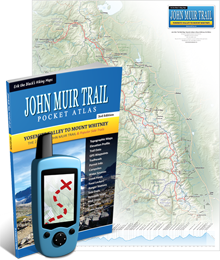
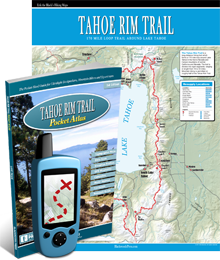
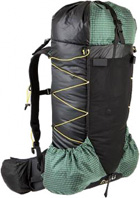
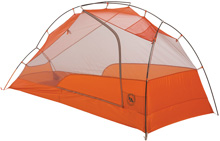
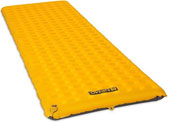
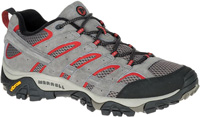

Instead of an Umbrella try a reflector tarp it is not as bulky and you can pack it away cleaner.
Erick, great advices. I would just dare to add to your coments that I highly recomend wearing gloves (gym gloves, biking gloves, etc.) when hiking at the desert because the type of ground there is most commonly at this areas (fingerless, are the best). I live (and hike) at the Chihuahua desert. Wearing gloves in this area is mandatory. I’ve seen people fall getting really hurt with cuts and bruises at their hands because of the kind of rocks on the ground. Since english is not my first lenguage, please excuse any mistake of my writing. Thanks again.
Great Blog for desert hiking. Loading up on water at rest stops is so important. Ive never used an umbrella on a hike but I am definitely going to look into it after reading this post.
Thanks for the great tips for hiking in the desert sun… looking forward to a Golite chrome umbrella & will try the hands-free tip.
In regards to “cover up or not to cover up,” I believe covering up is most popular in the Middle East, where temperatures are routinely above 100 degrees, i.e., above body temperature. More exposure to the greater heat works against you. If hiking in the high desert, where temperatures might routinely be in the nineties or lower, than allowing your body heat to dissipate through less covering would serve you well.
The body processes only so much water at a time. Chugging large amounts of water leads to more waste (sweat, urine) than sipping small amounts on a more continual basis. Dry camping is not detrimental if you have enough water to sip periodically until your next water hole. Electrolytes also help in this matter, as Ralph pointed out. The same principle applies to food.
Have used the golite dome umbrella in “handsfree” mode while hiking. I will try to add a picture, but not sure if I can do that here. To make this work, 1) thread your sternum strap through the handle loop of the dome umbrella. 2) Allow the brolly to hang while you close the sternum strap. 3) Open the brolly, and push the handle down in between your chest and the sternum strap until the handle loop stops further movement. 4) Adjust and hike on. This setup will be stable, with a slight lean towards your neck, so I have found that I can choose right or left to tilt the brolly towrds the sun. Day 4 – 145 Rod with Umbrella on Bonilla Point Rock Shelf.JPG
There’s also the option of a combination of Erik’s “Cover-up” and “Taking it off” desert clothing strategies. I’m fair skinned and have some skin cancer in the family. But I loved the desert hiking on the PCT and on the CDT. Just be prepared and protect your skin!
I like the covering up option for my upper body that has body surfaces that are perpendicular to the sun’s rays – head, shoulders, and forearms and hands (using trekking poles). I use a wide-brimmed hat with bandana over neck, long-sleeve shirt, and fingerless sun gloves by Coolibar.
For my lower body, I like and need the breathability of lightweight nylon running shorts. In pants my legs sweat so much that I can get really bad chaff in the crotch. I also cut out the liner of my running shorts so that I can enjoy the nice dry desert breeze up under there! Does wonders.
Having backpacked in the Western US for over 20 years, I highly recommend the cover up method of dressing. Research shows that your body heat does indeed stay lower when fully proteced from the sun. In addition, many if not most desert plants have spines, thorns, and stickers that can cut your legs to ribbons if you’re bushwacking. Sharp, exposed rocks are also a factor if you’re scrambling. Finally, long-term sun exposure in southerly landscapes can and will lead to the Big C — more than one of my desert friends has contracted skin cancer. Be careful out there, folks!
Great post! I haven’t done much desert hiking except in Anza Borrego, but I’d like to do more. I was always more of a mountain man rather than a desert rat, but after experiencing the beauty of the desert, I discovered what an amazing and different kind hike it can be.
I agree with you on lightweight socks, but I like wool because it seems to hold up better. Wool-e-ator is a good one.
Also, rather than strip down, I prefer to wear a loose-fitting, lightweight, light-colored wind shirt over a wicking t-shirt. Keeping the sun off keeps me cooler, even though I’ve got another layer on. Of course YMMV…
This was awesome. Erik, I love the detail you provide! Oh, I would add, for warm weather hiking I do prefer a skirt (kilt?)(undergraments are then optional!)
The extra air circulation is wonderful, and the only place my skirt really touches my skin to build up sweat is the waist band, so I wear one that is “comfortable loose”.
Eric-
Thanks so much for all of your great tips and stories you share with us here on your site. I have went from a near 15lb baseweight to under 10lbs, thanks mostly to your tips and tricks. I now am teaching my young adult kids the benefits (and fun!) of lightweight backpacking.
I’m happy with my packweight now, and plan on enjoying this next summer, after my shoulder heals up a bit more.
It may be nice to suggest some ways that folks can keep their appetites up those first couple of weeks on the trail. Many of us has a problem keeping food down those first couple of weeks, or when it’s exceptionally hot.
Erik
To help reduce the possibility of blisters being generated from sweaty and/or gritty socks, keep an second pair pinned with an extra large/strong safety pin to your backpack. When you stop for a break swap the socks on your feet for the ones pinned to your backpack. This method of swapping socks insures that the socks will completely dry out before being used again.
Gerry
Excellent tips, but on loading up at water sources, I’m a little concerned newcomers to the desert will forget about keeping their electrolytes up. We carry various packets that we dump in our water when things get hot. Emergen-C, Tang, practically anything seems to help as long as it has salt, and also carry or mix in energy source with sugar or equiv. Any sort of bar is helpful to munch.
@Ralph: Great point, thanks. Good for electrolytes and also for masking the taste of water from some of the less desirable desert sources (like cow tanks and whatnot).